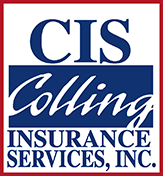The best way to protect a new car or a well-maintained older car is to keep it in a garage. A garage will protect the finish of your car from the various harmful elements of the weather. In addition to protecting it from hail, rain and snow, keeping your car inside a garage will also keep tree pollen, air pollution and even the sun’s powerful rays from your car’s finish.
If you do not have the benefit of a garage to protect your car from the elements, there are still ways to protect your car. With a little creative thinking and some simple maintenance, you can keep your looking as good as new.
A Car Cover
Most auto parts stores carry vinyl covers that will completely cover your vehicle. These covers do a good job of protecting your car from most of the weather elements as well as the sun. The main drawback to such a protective cover is that they are a bit cumbersome to put on and remove. If you are in and out of your car more than a few times each day, you probably will not want to leave the cover on all the time. For the most part, a car cover should be put on at night and removed in the morning.
Where You Park
If you are forced to park in an outdoor parking lot, try to avoid parking under a big tree that might leave sticky sap deposits on your car finish. It is nice to have shade to keep your car cool, but it is not so nice to come back to your car and see the hood stained with tree sap. While some trees do not drop their leaves or stain the cars below them, many trees do. Be sure to know the characteristics of any tree you may park under.
Wash Often
Just like people need to take a shower to stay clean, cars need to be washed regularly to keep their shiny finish. If you can not afford to take your car to a car wash every week, make a practice of removing some of the dirt with a squirt from the garden hose.




 Email an Agent
Email an Agent


 Click to Call
Click to Call Get Directions
Get Directions